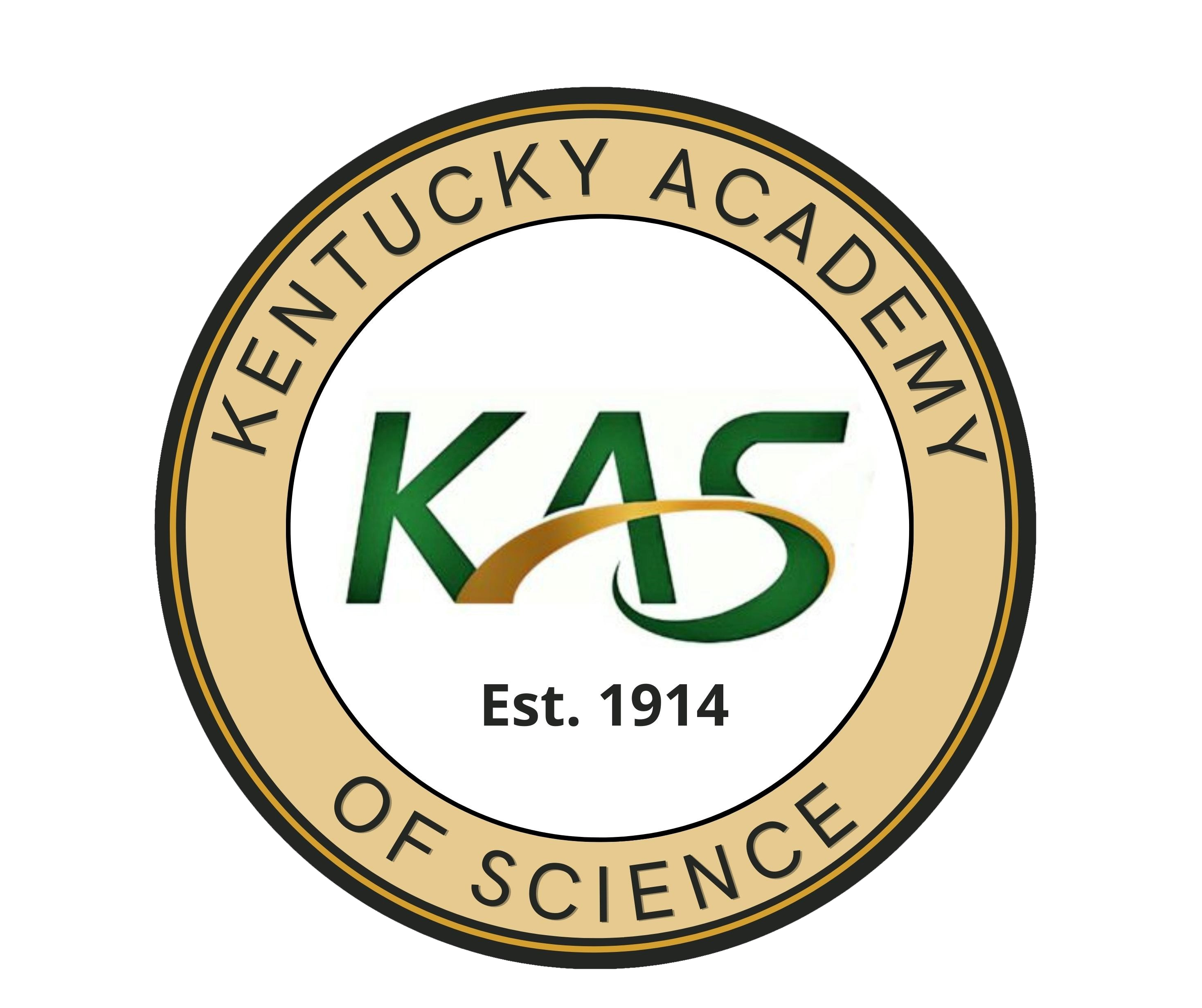Kentucky Academy of Science
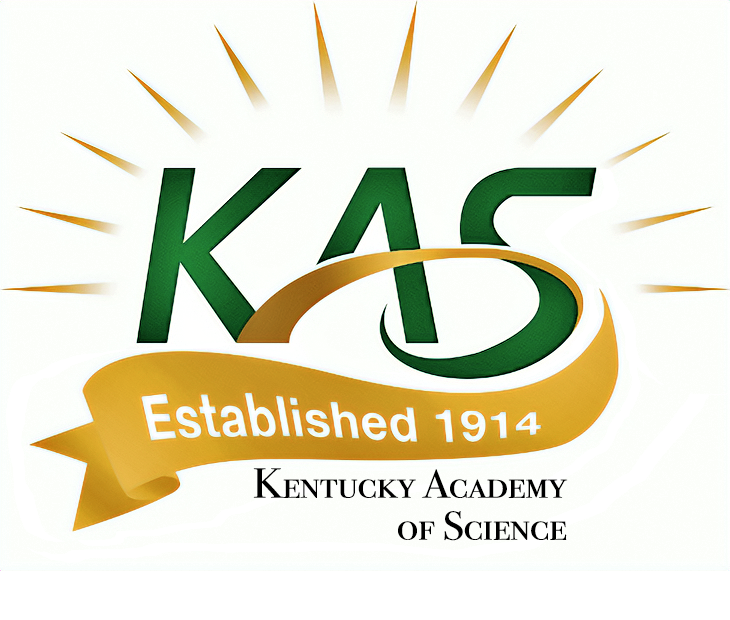
2023 Annual Meeting Program
November 3-4, 2023
Kentucky Academy of Science Annual Meeting
at Northern Kentucky University
and
the 91st Anniversary meeting of the Kentucky Junior Academy
 of Science
of ScienceWelcome to Northern Kentucky University
Dr. Samantha Langley, Vice-Provost for Graduate Education, Research and Outreach

We are delighted to host the annual meeting of the Kentucky Academy of Sciences at Northern Kentucky University. NKU has an active and vibrant STEM community that includes faculty conducting research supported by funders such as the National Science Foundation and the National Institutes of Health, students that engage in research through our Institute for Student Research, Scholarship and Creative Activity (ISRCA) and through the Center for Integrative Natural Science and Mathematics (CINSAM), and many initiatives that support P-12 students interested in STEM events, summer camps and academies. In FY23 NKU faculty received 82 externally funded research awards totaling over $12M in funding – an institutional record. In addition, faculty mentored many students - over 200 presented their work at our annual Celebration event in the spring, and many mentored students who participated in our first year research experience (FYRE), and published their work in Nysa, our journal of student research. Here are a few recent highlights:
Valerie Hardcastle, Director of the Institute for Health Innovation secured a $2.8M Health Resources and Services Administration (HRSA) grant to strengthen northern Kentucky’s bioscience and health innovation ecosystem by providing skill development and workforce training in clinical research and entrepreneurship.
Mark Bardgett, Regent’s Professor of Psychological Science, received $548K from the National Institute of Health to study brain development after opioid drug use.
Dirk Grupe, Associate Professor and chair, Physics, Geology and Engineering Technology has recently published papers in Notices of the Royal Astronomical Society and the Astrophysical Journal on black holes, more specifically accreting super-massive black holes in the centers of galaxies, which he observers mostly in the ultra-violet and X-ray regimes using NASA/ESA satellite observatories.
Vijay Raghavan, Professor of Computer Science, published a paper in the Journal of Computer Information Systems on how different project leadership styles improve project performance based on different types of employees and gender.
Allison Parker, Assistant Professor of Environmental Science, published a paper in PLoS ONE on how female mosquitos use visual and chemical cues to determine suitable habitats to oviposit their eggs. One of Allison’s student co-authors, Amber Miller, was awarded first place for this research in the Ecology division of the KAS student competition in 2021.
Welcome to northern Kentucky, and we hope you enjoy your time here at NKU!
Registration and many events will be in the NKU Student Union, 20 Kenton Dr, Highland Heights, KY 41076
Table of Contents
Welcome the Junior Academy
Code of Conduct
Special Accommodations
Land Acknowledgment
Campus Map & Floor Plan
Parking
WiFi at NKU
Food
Photo Contest
Sponsors
Exhibitors
View Friday Schedule Grid
View Saturday Schedule Grid
Friday morning November 3
8am Registration Desk opens
8am-9am Friday Poster setup
8am - 6pm Practice Room Available Griffin Hall 318
9am - 10am Junior Academy Orientation- Student Union 102
9am-12 noon Friday morning Oral Presentations
Agricultural Sciences - Griffin Hall 150
Engineering - Student Union 108
Health Sciences - Student Union 109
Zoology / Botany - Student Union 302
Microbiology - Student Union 302
9am - 12 noon Friday morning Poster Presentations - Ballroom
Computer & Information Sciences
Environmental Sciences
Mathematics
Ecology I
10am-12noon Junior Academy Visit to NKU Engineering
10am-12noon Junior Academy Visit to NKU Chemistry
10am-12noon Junior Academy Tour of NKU STEM facilities
11am STEM Career Fair & Exhibitors Tables
11:45-1:00 Box Lunch Pickup (by pre-order)
12:15 -1:15 Junior Academy Lunch & STEM Pathways panel - Griffin Hall 316
12:15-2:15pm Friday Workshops
Wikipedia Edit-a-Thon - Griffin Hall 155
Making the 'M' in STEM Explicit Student Union 105
Demystifying the Publishing Process (12:15-1:15) Student Union 108
Innovating Strategies in the Classroom - Student Union 302
Natural History Collections across Kentucky + NKU Herbarium - Science Center 168
The Future of EPSCoR - Student Union 104
12:45-2:15pm Friday Workshop
Science Policy & Advocacy - Student Union 109
1:15-2:15 Junior Academy Workshop:The Cancer Disparity in Kentucky: How Can I Help? - Griffin Hall 316
2:30-4:30 pm Friday afternoon Oral Presentation sessions
Aerospace Research in Kentucky Student Union 104
Psychology /Anthropology/Sociology Student Union 105
Computer & Information Sciences - Student Union 302
Ecology - Student Union 108
Mathematics - Griffin Hall 316
2:30-4:30 Junior Academy visit to StegoStudio MakerSpace in Steely Library
2:30-4:30 pm Friday afternoon Poster Presentations - Ballroom
Agricultural Sciences
Chemistry: Analytical & Physical
Engineering
Geography
Health Sciences
Science Education
Physics & Astronomy
5:00 pm Friday Plenary Session- Greaves Hall, NKU Fine Arts Center
Rebecca Blankenship and Mason Kalinsky
7pm Friday evening November 3
Scientists' Night Out at the Newport Aquarium
or
7pm Planetarium Show at the NKU Haile Planetarium ($5 suggested donation)
Saturday November 4
8am Breakfast - Kentucky Geoscience Workforce Discussion (all are welcome!) - Griffin Hall 316
8am Breakfast for KCTCS Faculty - Griffin Hall 144
8am - 6pm Practice Room Available Griffin Hall 318
9am-12 noon Saturday morning Oral Presentations
Special Session: Dinosaurs Under the Microscope - Griffin Hall 316
Environmental Sciences - Student Union 302
Geology - Griffin Hall 316
Physiology & Biochemistry - Student Union 108
Science Education - Griffin Hall 150
Physics & Astronomy- Student Union 109
9am - 12 noon Saturday morning Poster Presentations - Ballroom
Anthropology / Sociology
Cellular & Molecular Biology
Chemistry: Organic/Inorganic
Ecology II
Zoology / Botany
Microbiology
10am - 3:30pm Exhibitors
11:45-1pm Box Lunch pickup or Pizza (by pre-order)
12:15-1:15pm KAS Business meeting luncheon (for members, by reservation)- Student Union 104
1:30-4:30 pm Saturday afternoon Oral Presentations
Cellular & Molecular Biology- Student Union 109
Chemistry-All- Student Union 302
Geography Student Union 105
1:30-4:30 pm Saturday afternoon Poster Presentations - Ballroom
Physiology & Biochemistry
Psychology
1:30-4:30 Saturday afternoon Workshops
Process Oriented Guided Inquiry Learning: A student-centered approach for STEM classrooms - Griffin Hall 150
Engaging Hands-On Activities for the 8 April 2024 Total Solar Eclipse - Griffin Hall 316
1:30 Saturday Field Trips (by RSVP)
Afternoon field trip to Big Bone Lick State Historic Site
Afternoon field trip to the NKU and Thomas More University Field Stations - meet in circle in front of Student Union

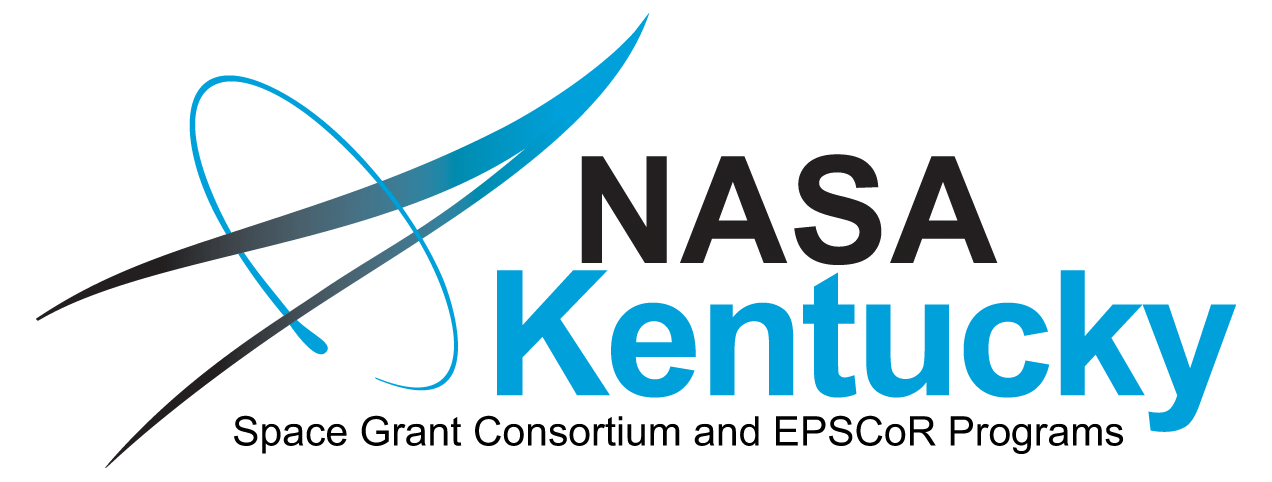
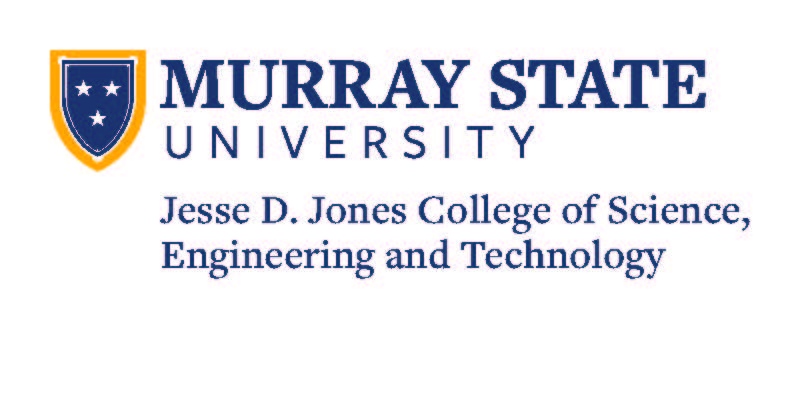
Thank you to our partners at NKU

NKU Office of Education, Research and Outreach
Institute for Student Research, Scholarship and Creative Activity (ISRCA)
Center for Integrative Natural Science and Mathematics (CINSAM)
NKU Physics, Geology and Engineering Technology; NKU Department of Chemistry & Biochemistry
Kentucky Center for Mathematics; NKU Department NKU Career Center, NKU MakerSpace, Community Connections, NKU Herbarium, NKU Catering
Thank you to our Field Trip Presenters:
Thomas More University Field Station
NKU Research & Education Field Sttion (REFS)
Big Bone Lick State Historic Site
Geological Society of Kentucky
and Kentucky Paleontological Society
Visit Our Event Exhibitors
University of Kentucky College of Pharmacy
The number six ranked University of Kentucky College of Pharmacy is a national leader in pharmacy education. Our College and our students are consistently ranked in the top of the profession nationally. The College has maintained a top 10 ranking for the last 40 years and continues its drive to help students achieve their fullest potential as they enter the pharmacy profession. At the UK College of Pharmacy, we know that revolutionary drug therapies and health care innovations are born from diverse backgrounds and experiences of our students, faculty, and staff. UK's flexible PharmD and PhD Programs offers students the opportunity to find their path through advanced opportunities, international studies, community service, health care practice, and research.
KY- INBRE at University of Louisville
The KY INBRE (formerly KBRIN) is a collaborative network of biomedical researchers in state-supported and independent institutions of higher education within Kentucky and is funded through a grant from the National Institutes of Health (NIH) National Institute of General Medical Sciences (NIGMS).
WKU Department of Earth, Environmental, and Atmospheric Sciences
The EEAS provides relevant, up-to-date, and integrative undergraduate and graduate educational experiences in the broader field of the earth, environmental, and atmospheric sciences. WKU EEAS strives to provide outstanding geoscience programs, with broad international connections, to meet the challenges of the Anthropocene. The Department offers three undergraduate programs, one undergraduate certificate and one graduate program, which are designed to meet the career goals of students in a wide variety of geoscience areas. We aim to develop exceptional undergraduates and graduates in our programs and in colonnade courses, to engage students in critical thinking and problem-solving education, and relevant training in the classroom, laboratory, and field settings. We aim to enhance the reputation of the Department and its constituencies through meaningful research, community engagement, public service, and workforce development.
Programs offered: Bachelor of Science in Environmental, Sustainability, and Geographic Studies; Bachelor of Science in Geological Sciences; Bachelor of Science in Meteorology; Geographic Information Systems, Certificate; Emergency Management Disaster Science, Certificate; Master of Science in Geoscience.
Peace Corps
In the Peace Corps, we take a different approach to making a difference. Our Volunteers are inspired by impact that is hands-on, grassroots-driven, and lasting. By immersing ourselves in communities abroad, the Peace Corps works side-by-side with local leaders to tackle the most pressing challenges of our generation. From leading health campaigns to boosting local entrepreneurship to teaching digital literacy, the Peace Corps offers a range of opportunities for our Volunteers to take on new challenges. Are you ready to work for the world? Find your new path at https://www.peacecorps.gov/.
Kentucky Youth Law Project, Inc
The Kentucky Youth Law Project, Inc., is a nonprofit legal services organization whose mission is to enhance and protect the legal rights of Kentucky's LGtQIA+ children and youth through free legal representation, education and training, and public policy advocacy. Because 40% of all homeless youth identify as LGBTQIA+ our goal is to reduce homelessness and promote equal treatment of LGBTQIA+ children and youth in social welfare agencies, government services, the courts, and public schools throughout Kentucky. KYLP is a 501(c)(3) nonprofit corporation. Our Tax Identity Number is 46-5170220.
University of Kentucky: Kentucky Geological Survey
The Kentucky Geological Survey (KGS) is a publicly-supported research center located on the main campus of the University of Kentucky. We serve the state of Kentucky by conducting research and providing unbiased information about geologic resources, environmental issues, and natural hazards affecting Kentucky.
Kentucky Heritage Land Conservation Fund
Established in 1990, the Kentucky Heritage Land Conservation Fund (KHLCF) is the primary source of state funding for the purchase and management of natural areas. It is used to purchase land from willing sellers for nature preserves, state parks, state forests, wildlife management areas, environmental education areas, wild rivers and wetlands. The KHLCF Board protects each site in perpetuity with a conservation easement or deed
restriction. The Kentucky Academy of Science holds a seat on the Committee overseeing this fund.
Kentucky State University Land Grant Programs
The new College of Agriculture, Community and the Sciences (CACS) is composed of five schools, including the School of Agriculture, Communities, and the Environment; School of Aquaculture and Aquatic Sciences; School of Science, Technology, Engineering, and Mathematics; School of Education, Human Development, and Consumer Sciences; and the School of Nursing. There are many exciting undergraduate and graduate degree program areas housed in the five schools. Additionally, the CACS also works closely with the Kentucky State University Land Grant Program and its Research, Extension, and outreach programs.
Kentucky Geographic Alliance
The Kentucky Geographic Alliance is a grassroots organization of educators supporting geographic education. We provide support services for P-12 teachers in the Commonwealth to enhance the geographic awareness of students. As a part of this initiative we send out Kentucky in the News once a month in which local news stories are related to geography for use in Kentucky classrooms. National Geographic maps and other resources are also available from the KGA. We encourage you to join us!
Northern Kentucky University Office of Graduate Education
Our personalized student focus makes Northern Kentucky University the premier choice for furthering your education and enhancing your career path. Our graduate programs are born in theory and grown in practice, giving you the core competencies and the confidence needed to succeed and lead in your career.
University of Louisville School of Medicine-Integrated Programs in Biomedical Sciences
The Integrated Programs in Biomedical Sciences (IPIBS) at the University of Louisville, is a gateway for graduate students interested in biomedical research as a career choice. The University of Louisville offers a supportive academic environment in a friendly, vibrant city and a financial assistance package consisting of an annual stipend, health insurance, and full tuition coverage.
Graduate students enter the IPIBS program through one of the five basic biomedical discipline-based Ph.D. programs at the School of Medicine. IPIBS awards fellowships for students in the first two years in the program, after which support is maintained through the Departments.
Thank you to our All-Star Local Arrangements Team at Northern Kentucky University
Shauna Reilly, Julie Reizner, Seyed Allameh, Dirk Grupe, KC Russell, Rick Boyce, Dick Durtsche, Madhura Kulkarni, Michael Guy, Kebede Gemene
Thank you to KAS Officers
President Julie Reizner
President -Elect Noel Novelo
Vice President LiLi Zyzak
Past President Jon Dixon
Thank you to our Program Coordinator and Kentucky Junior Academy Director
Melony Stambaugh
Thank you to Our 2023 Section Leaders & Session Chairs
Aerospace Research in Kentucky
Jacob Owen, NASA-KY
Agricultural Sciences
Vacant
Anthropology and Sociology
Ann Kingsolver, University of Kentucky
Timothy Hare, Morehead State University
Cellular and Molecular Biology
Mahavir Singh, University of Louisville
Farrukh Aqil, University of Louisville
Chemistry: Analytical/ Physical
Emmalou Schmittzehe, Morehead State University
Chemistry: Organic / Inorganic
Elizabeth Thomas, Morehead State University
Laura Rowe, Eastern Kentucky University
Computer and Information Sciences
Muzaffar Ali, Bellarmine University
Neil Moore, University of Kentucky
Dinosaurs Under the Microscope:
Julie Reizner, Northern Kentucky University
Ecology
Ben Brammell, Asbury University
Jessica Moon, Murray State University
Engineering
Aaron Daley, US Army Corps of Engineers
Seyed Allameh, Northern Kentucky University
Environmental Science
John Starnes, KCTCS
Geography
Christopher Day, University of Louisville
Geology
Dan Phelps, Kentucky Paleontological Society
Richard Smath, University of Kentucky
Health Sciences
Avinash Tope, Kentucky State University
Mathematics
Doug Chatham, Morehead State University
Joshua Qualls, Morehead State University
Microbiology
Geoff Gearner, Morehead State University
Physics and Astronomy
Marilyn Akins, Bluegrass Community and Technical College
Kevin Adkins, Morehead State University
Physiology and Biochemistry
Michael Guy, Northern Kentucky University
Cecilia Ramilo, KCTCS
Psychology
Matthew Shake, Western Kentucky University
Kinsey Bryant-Lees, Northern Kentucky University
Science Education
Wilson Gonzales-Espada, Morehead State University
Zoology / Botany
David Eisenhour, Morehead State University
David Hayes, Eastern Kentucky University
Thank you Rob Weber for Cover Design & Program Layout
2023 KAS Annual Meeting Online Program
Junior Academy Collaboration
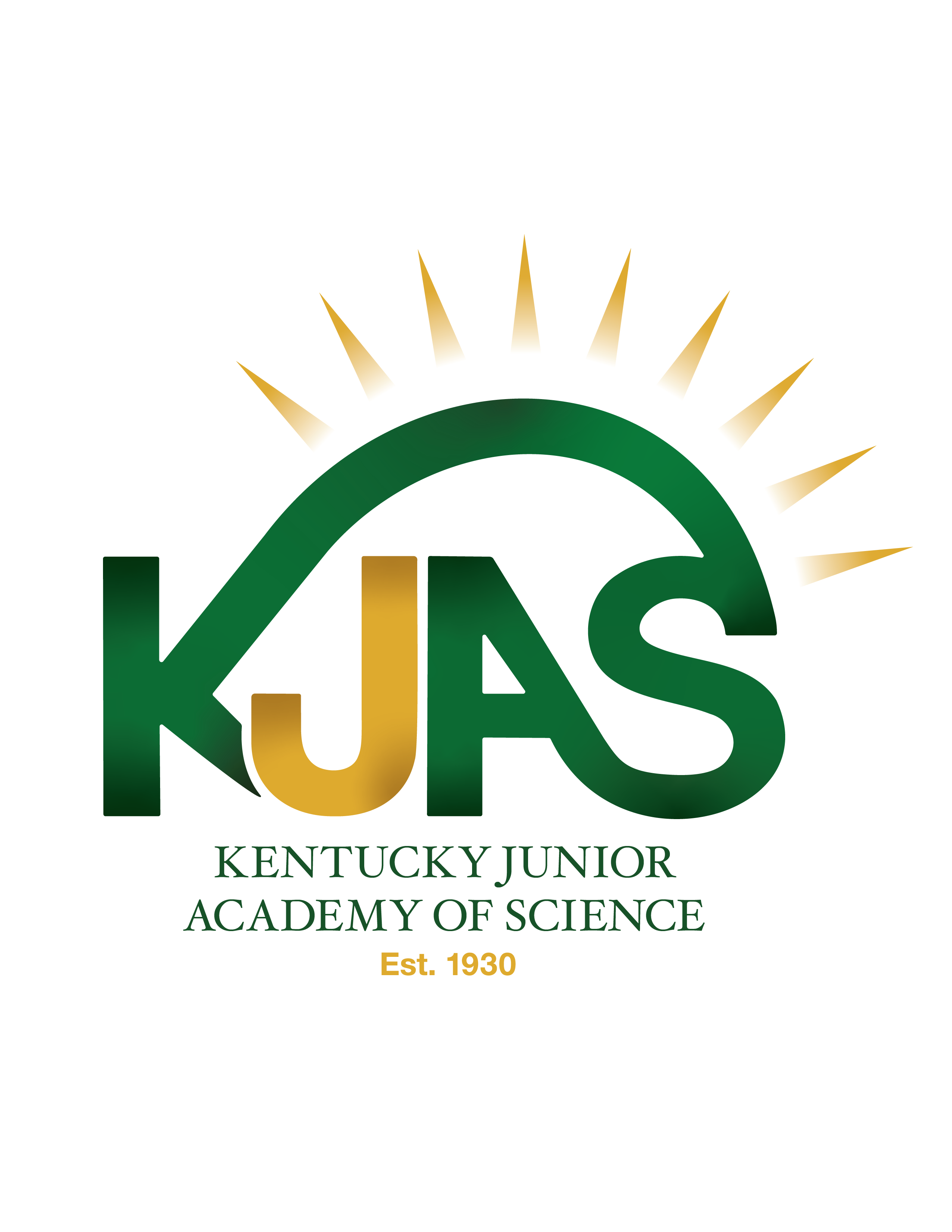 It is very exciting to have the Junior Academy joining us for the second year. It is especially gratifying for this to happen here at my alma mater - Go Norse! We have created this opportunity for middle and high school students to see the work of undergraduates, graduates, and faculty members. I believe that it is important to begin making connections to the type of research that interests us and to the people who are doing that research. Let us use this opportunity to guide the next generation of scientists towards their future scientific ventures.
It is very exciting to have the Junior Academy joining us for the second year. It is especially gratifying for this to happen here at my alma mater - Go Norse! We have created this opportunity for middle and high school students to see the work of undergraduates, graduates, and faculty members. I believe that it is important to begin making connections to the type of research that interests us and to the people who are doing that research. Let us use this opportunity to guide the next generation of scientists towards their future scientific ventures.The support we receive from KAS is invaluable and the mechanism that makes this collaboration happen. Please help support these budding scientists and welcome them to KAS and NKU!
Melony Stambaugh
Director, Kentucky Junior Academy of Science
Program Coordinator, Kentucky Academy of Science
KAS Code of Conduct
The Kentucky Academy of Science Annual Meeting is an interdisciplinary professional environment that cultivates scientific discovery and understanding.
Thank you for contributing to our advancement of science by behaving professionally, respectfully and collegially at all times. If you witness inappropriate behavior please notify a KAS staff person or officer.
Special Accommodations
We are doing our best to plan and host an Inclusive Scientific Meeting. KAS is committed to diversity, equity, inclusion, justice, and accessibility. If you have a suggestion or concern please share it with a KAS staff person or officer.
Gender Neutral restrooms are on the Student Union (3rd floor) and Griffin Hall (2nd Floor)
Mothers' Room is available in Student Union Room 106
A Practice Room is available for presenters in Griffin Hall 318
Land Acknowledgment
We are gathering on land previously inhabited by the Hopewell, Adena and Fort Ancient mound-builder peoples, and claimed by Shawnee and Cherokee tribes. For more information go to https://native-land.ca/
Campus Map & Floor Plan
NKU Campus Map
Student Union Floor Plan
Parking
If you are driving please park in the garage on Kenton Drive across from the Student Union.Connecting to NKU Wireless
In the NKU Student Union and Griffin Hall:
SSID: KAS
Password (case sensitive): KAS!0149
Go into your device settings, then to Wi-Fi, and select the KAS network, and then enter the password to connect.
This is configured only in the Student Union building and Griffin Hall. If you move around the building, you may need to reconnect to the wireless (and re-enter the password).
NKU Wireless in other buildings:
The normal Norse_Guest wireless will still be available elsewhere on campus. Use the KAS Wireless in the Student Union or Griffin to create an account in Norse_Guest and use the KAS wireless to obtain your login credentials.
Food
Coffee & light breakfast will be available both days.
If you ordered a box lunch, it will be available to pick up Friday or Saturday from11:45 -1pm on the 1st floor of the Student Union
The Student Union 3nd floor Food Court (+ coffee shop) is open Friday for lunch, but not Saturday. There is no food or beverage available for purchase Saturday on campus.
The Newport Aquarium Friday evening event features a Taco Bar.
If you ordered Pizza & Salad for lunch Saturday show your nametag at Room 102 in the Student Union
The Saturday Business Meeting includes Lunch
Other NKU campus dining options
Photo contest
Share your creativity in the Annual Meeting photo contest!
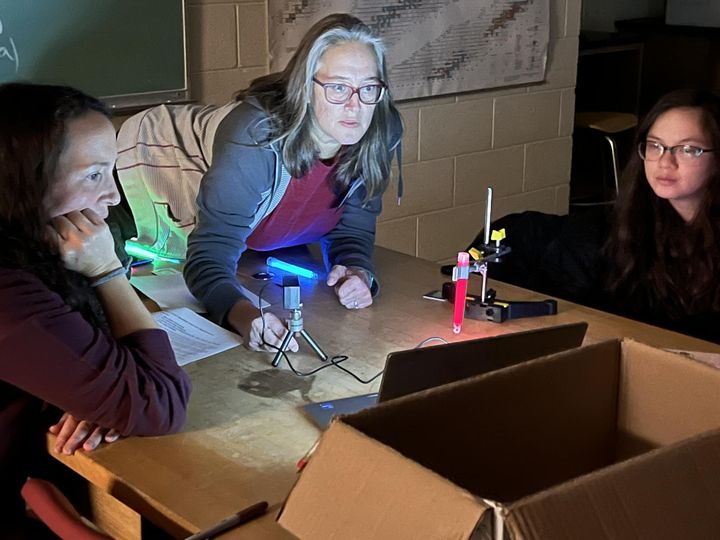
With a phone in every pocket, we’re all photographers now! Please help us share the excitement and action during the 2023 KAS Annual Meeting and let your creativity shine by sharing your conference photos to social media.
You’ll win $50 if your photo is judged as the meeting’s best! You can join the contest by posting photos on Facebook, X-Twitter or Instagram using the hashtag #KASMeeting2023 . Post them by 8 p.m. on Sunday, Nov. 5.
You’ll find KAS on X-Twitter with the handle @Kyscientists. On Instagram, we’re kentuckyscience. Find us on Facebook under: Kentucky Academy of Science.
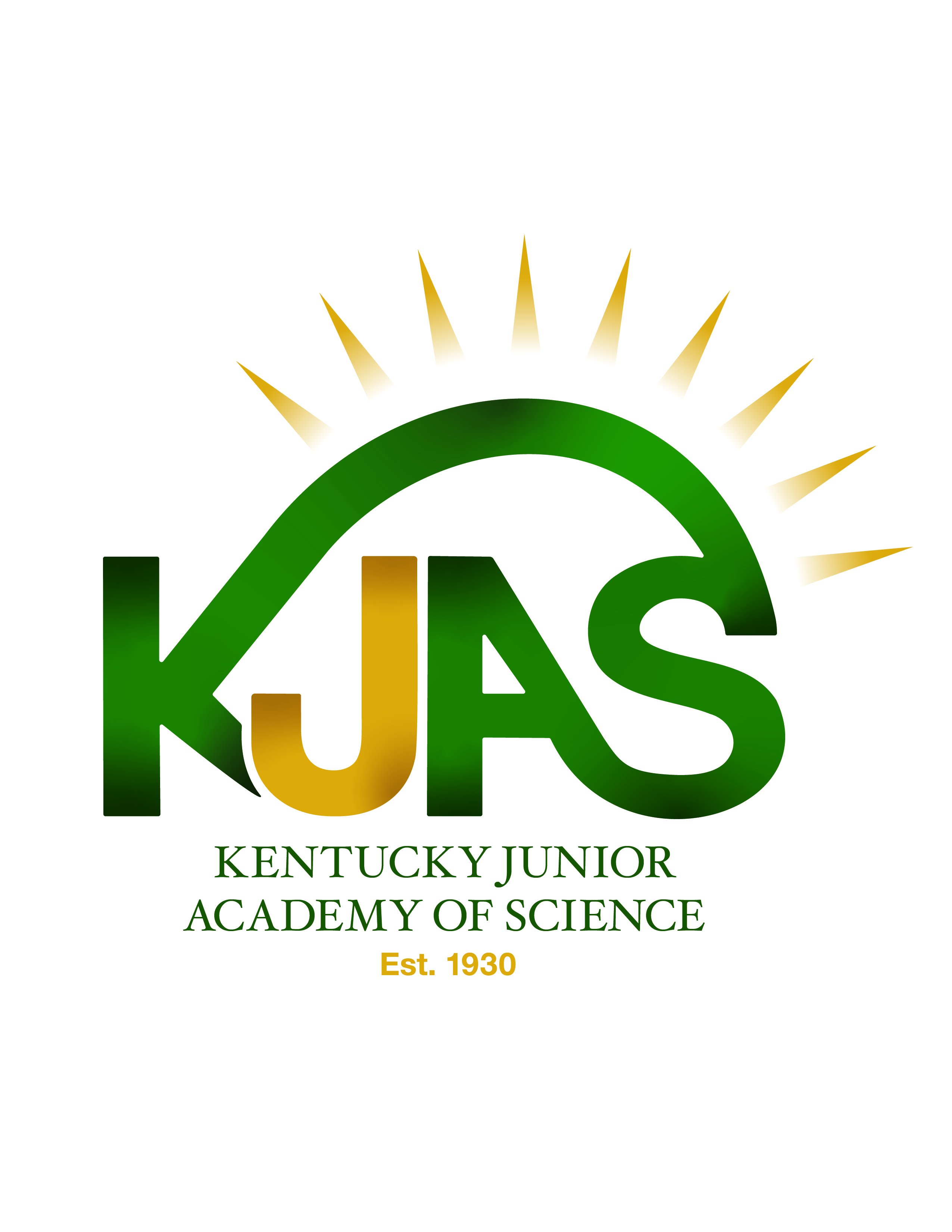 All Junior Academy Participants are required to start here- we'll provide an overview of the choices you have throughout the day and you'll get tips for how to make the most of your Kentucky Academy of Science / KJAS Annual meeting experience.
All Junior Academy Participants are required to start here- we'll provide an overview of the choices you have throughout the day and you'll get tips for how to make the most of your Kentucky Academy of Science / KJAS Annual meeting experience.| Chair, Microbiology: Geoff Gearner | Secretary, Zoology / Botany: David Eisenhour |
| Chair, Zoology / Botany: David Hayes |
An 11-week digestibility trial was conducted to investigate the digestibility of two HSM ingredients P30 and P50, with P50 having higher protein content. Four diets were formulated: reference, soybean meal (SBM), P30, and P50. Once a week fecal matter was collected from each of four replicate tanks with 20 fish each through the stripping method. Fecal matter was pooled by tank, dried at 65°C for 24 hours, and stored at 20°C pending chemical analysis. The apparent digestibility coefficient (ADCs) of dry matter, crude protein, phosphorus, and various essential and non-essential amino acids were assessed. The study revealed significantly lower ADCs of crude protein in the reference treatment when compared to the SBM, P30, and P50 diets. Additionally, the P50 diet exhibited significantly higher dry matter ADCs compared to the reference diet. Further analysis of ADCs for specific amino acids, including Aspartate, Serine, Cysteine, and Arginine, indicated higher ADCs in P50, P30, and SBM diets compared to the reference diet. This research reflects the potential of HEM as a complementary source of nutrients and energy in largemouth bass feeds.
Biochar was applied before planting at the rate of 12 ton/ha. There were four different levels of nitrogen fertilization treatments: 0,40, 80, and 120 kg N/ha. Fertilizer was applied in 3 equal split applications after beginning of seed filling stage (R5). The effect of biochar and late season N fertilization on soybean growth, physiological parameters and seed yield will be presented and discussed.
Hence, seed growth dynamics under the increased assimilate supply during different seed filling period is studied in a field experiment at Frankfort, KY. Two soybean cultivars, one each from Maturity Group 2 and Maturity Group 4 were used to assess seed growth dynamics under control and increased assimilate supply during different seed filling period. Treatments consisted of a control, and a depodding (pod removal) treatments at weekly intervals after R5 (beginning of seed filling stage) until maturity. Only 4 to 6 pods (one pod in a node) were maintained in a plant in depodding treatments to provide a higher assimilate supply to remaining seeds. Final unit seed weight, pod weight, seed filling rate and duration across the treatments will be analyzed and result will be presented with a main goal of identifying final seed size determining stage in soybean.
flow in the boundary layer around the vehicle. Thermal protection systems
(TPS) are commonly constructed from fibrous insulation materials to inhibit
heat transfer from the boundary layer to the payload. Two experimental efforts
are in progress to characterize the contribution of radiation to thermal transport
through fibrous TPS materials used on space capsules. A genetic algorithm will
be used to model the non-linear contribution of radiative transport coupled with
solid conduction through fibrous LI-2200. This study will include two concur-
rent experiments, one at the University of Kentucky Paducah Campus and the
other in the HyMETS arc-jet plasma tunnel at NASA Langley Research Center
(LaRC). The experimental campaign in the NASA arc-jet tunnel will enable in-
situ spectral characterization of the TPS material response. The experimental
results will be used to verify and extend computational models used in TPS
design.
I developed an Omni Wheel for walkers, which allows users to maneuver very smoothly and turn on their own center of rotation rather than drag the Straight Wheel walker about the axis. This wheel has a Bell and Cup design, 20 ball bearings, a 75mm diameter bouncy ball and a stem to connect to the walker. An original Arduino sensor was also designed with built-in IMU to collect accelerometer and gyroscope data.
The Omni Wheel was tested for 2 different motion types – straight-line and turning, on 4 different users and results compared against the Straight Wheel. The Omni Wheel data showed a significant improvement in smoothness and ease of movement over the Straight Wheel for every person for both motion types.
The Arduino sensor was attached to the walker to track any potential tilts or falls. The sensor data clearly identified every fall. There were 2 modes of notification of a walker fall – through an LED light that lit up and also an immediate text notification to a selected cell number of the caregiver.
consideration for farmers so they can make decisions to suit their needs in yield, disease resistance, and buyers' needs for fruit quality and appearance. A field experiment was established at University of Kentucky Research Farm to cultivate watermelon under seven soil management practices (chicken manure, sewage sludge, cow manure, biochar, vermicompost, chitin, and control treatment) and investigate the impact of soil management practices on the sugar content of three varieties of watermelon fruits (Black Diamond, Dark Belle, and Mama's Girl). At harvest, samples of watermelon fruit tissues were collected and homogenized with 80% ethanol to extract soluble sugars. Homogenates were filtered and one mL sample was determined colorimetrically using a pure glucose standard curve. Results indicated that none of the soil amendments impacted the concentration of sugars in watermelons. However, the variety Mama's Girl was superior in increasing the concentration of sugar (560 mg 100 g-1) compared to Dark Belle and Black Diamond varieties (321 and 315 mg 100 g-1, respectively). Other chemical analysis of watermelon fruits is currently under investigation.
According to the findings from the article "Ecology of the Endangered Species Solidago shortii V. Plant Associates" by David E. Buchele, Jerry M. Baskin, and Carol C. Baskin, Short's goldenrod (Solidago shortii) is federally endangered and exclusively found in the calcareous Eden Shale Belt in Northern Kentucky, spanning just 13 distinct population sites. This geographic limitation shows the need for conservation efforts to ensure its survival. The purpose of this research is to discover the environmental conditions crucial for Solidago shortii's existence, including factors like temperature, humidity, rainfall, and soil acidity. Our goal is to compare these theoretical requirements with the actual habitats supporting Solidago shortii in Kentucky, aiming to identify any disparities and their underlying causes. Our approach begins with an extensive literature review of existing data on Solidago shortii's ecological needs from sources such as the US Fish and Wildlife Service followed by the creation of mathematical models and graphs. Subsequently, fieldwork will be conducted to pinpoint suitable environments on the Kentucky map and determine whether Solidago shortii populations indeed inhabit these areas. This research carries practical implications for conservation, offering strategies for Solidago shortii's recovery and removal from the federal endangered species list, contributing to its preservation.
Increased disturbances associated with climate change have altered ecosystems and increased their sensitivity to disturbance. Quantifying changes in wildlife behaviors, community dynamics, and diversity during and after disturbance regimes can provide information to land managers and the public about the importance of these disturbances and the necessity for them in areas with a high diversity and abundance of disturbance obligate species. We placed cameras at 79 systematically random points within two systems on the Clark's River National Wildlife Refuge to evaluate the effects of disturbance on mammalian and avian occupancy, abundance, and diversity in areas with diverse flooding regimes. We plan to compare data on a year-to-year basis to monitor and observe any correlations present with flooding events. Due to the logistical issues associated with camera trapping in regularly flooded areas, very little camera surveillance has taken place in mesic systems. We have collected a large amount of data that will both help us to better understand the distributions and movements of species within these unique ecosystems as well as inform land managers in making management decisions within these environments.
All three mangrove species (red, black, and white) occurrence records at the study sites in Florida were extracted 19 bioclimatic variables from the BIOCLIM dataset. To track future mangrove distribution, we also extracted future climate data based on climate models, the MIROC6 from the CMIP6 of the sixth assessment report the IPCC. We modeled mangrove species distribution with both climate envelop model and random forest algorithms. Both models were performed using past and future climate variables respectively.
We modified the Temperature-Greenness (TG) model to improve the accuracy and prediction of remote sensing-based gross primary production (GPP) for Mangrove forests. The modification included adding salinity and sea surface temperature scalars to the TG model. We validated the model GPP against an eddy covariance flux tower site data at the Everglades National Park using remotely sensed data. This study helps in assessing natural disturbance impacts on the mangrove forest GPP. Accurate estimation of mangrove forest carbon fluxes is timely and critical for accurate predictions of how terrestrial ecosystems will respond to climate change.
Key words: Soil Amendments, Soil erosion, Infiltration and Environmental contaminants.
Thank you to Kentucky State University for providing lunch!
 important means of publishing research for the Academy's members. Publishing benefits both individual members and the Academy, and hence, we would like to increase the number of articles submitted and published in the Journal. Many who might well have something to publish in the Journal at times seem to be 'mystified' by the publishing process. The JKAS editors would like to provide this workshop to help 'demystify' the process for members of the Academy and increase the number and quality of articles published by the Journal.
important means of publishing research for the Academy's members. Publishing benefits both individual members and the Academy, and hence, we would like to increase the number of articles submitted and published in the Journal. Many who might well have something to publish in the Journal at times seem to be 'mystified' by the publishing process. The JKAS editors would like to provide this workshop to help 'demystify' the process for members of the Academy and increase the number and quality of articles published by the Journal.Presented by Dr. Frank Ettensohn, Editor In Chief, and Dr. Wally Borowski and Dr. Shauna Reilly, Editors of the Journal of the Kentucky Academy of Science
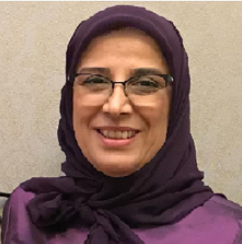 Collateral Learning derives from Self-Responsibility, Self-Awareness, Self-Management, Life-Long Learning, Self-Motivation, Emotional Intelligence, Interdependence, and Self-Efficacy. The goal is to collaborate and use our experiences to understand deeply the concept of the seven domains mentioned above and be able to help students and empower them with longtime motivation, deep learning, and a desire to be successful. Different activities are planned for attendees that are related to the seven domains. They take part when they are divided into small groups. In each group, members will share their thoughts and experiences following instructions. Then, each group will share their top two or three ideas with all attendees. After each activity, some valuable information will be shared including the results of some research or statements of some known experts. Some concise videos will be used during the workshop that are fun, attractive, and effective and deliver important points without lecturing.
Collateral Learning derives from Self-Responsibility, Self-Awareness, Self-Management, Life-Long Learning, Self-Motivation, Emotional Intelligence, Interdependence, and Self-Efficacy. The goal is to collaborate and use our experiences to understand deeply the concept of the seven domains mentioned above and be able to help students and empower them with longtime motivation, deep learning, and a desire to be successful. Different activities are planned for attendees that are related to the seven domains. They take part when they are divided into small groups. In each group, members will share their thoughts and experiences following instructions. Then, each group will share their top two or three ideas with all attendees. After each activity, some valuable information will be shared including the results of some research or statements of some known experts. Some concise videos will be used during the workshop that are fun, attractive, and effective and deliver important points without lecturing.Presenter: Dr. Fariba Nowrouzi-Kashan, Kentucky State University
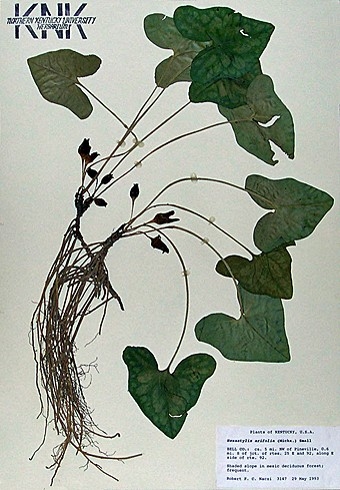 provide an extensive history of observations that scientists can compare to modern specimens. Kentucky contains a diverse range of natural history collections, however there is no central database containing collections in the state. This gives researchers an unnecessary challenge when trying to find relevant data for study. An active collaboration between Eastern Kentucky University and the Kentucky Academy of Science seeks to open a dialog with collection curators across the state and develop a system that will improve visibility for collections and facilitate specimen access for scientists. The workshop includes a tour of the NKU Herbarium to emphasize the importance of these institutional collections. The purpose of our workshop is to initiate conversations with the greater scientific community of Kentucky and strengthen collaboration among institutions.
provide an extensive history of observations that scientists can compare to modern specimens. Kentucky contains a diverse range of natural history collections, however there is no central database containing collections in the state. This gives researchers an unnecessary challenge when trying to find relevant data for study. An active collaboration between Eastern Kentucky University and the Kentucky Academy of Science seeks to open a dialog with collection curators across the state and develop a system that will improve visibility for collections and facilitate specimen access for scientists. The workshop includes a tour of the NKU Herbarium to emphasize the importance of these institutional collections. The purpose of our workshop is to initiate conversations with the greater scientific community of Kentucky and strengthen collaboration among institutions.If you simply wish to tour the NKU Herbarium and not participate in the workshop then proceed to room 101 in the Science Center.
Presenters: Dr. .Stephen Richter and Ethan Hovermale, Eastern Kentucky University, and Dr. Maggie Whitson, Northern Kentucky University
This workshop is targeted for faculty and student researchers in Kentucky. EPSCoR (Established Program to Stimulate Competitive Research) is a program that allo
There are other programs where Kentucky researchers can seek this kind of allocated federal funding - the National Aeronautics and Space 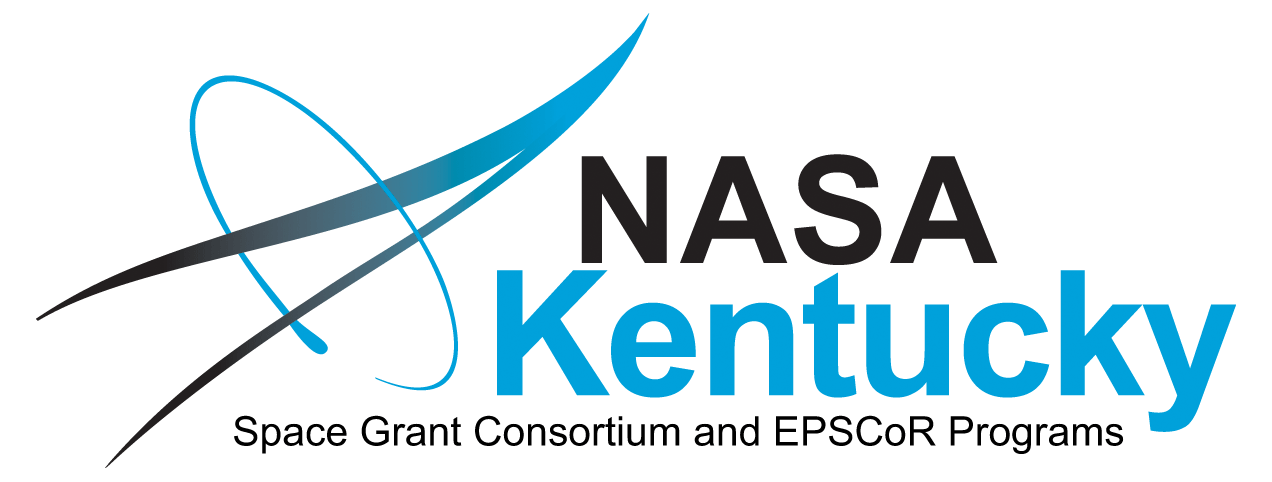
 importance of the respective disciplines but is more often interpreted as 'science for all.' We want to integrate science, technology, engineering, and mathematics in ways that highlight important concepts and connections. It's often hard to name these connections because we aren't always well-versed in each other's work.
importance of the respective disciplines but is more often interpreted as 'science for all.' We want to integrate science, technology, engineering, and mathematics in ways that highlight important concepts and connections. It's often hard to name these connections because we aren't always well-versed in each other's work.In this workshop session, we will dig into naming the mathematics in some STEM activities and prepare ourselves to share all the disciplines of STEM with students from kindergarten through graduate school.
Presenter: Dee Crescitelli, Kentucky Center for Mathematics
 Open to everyone. Wikipedia is a free, online encyclopedia that anyone can edit, including you! This workshop will share tools and resources for beginning editors, and you might find that editing Wikipedia is easier and more enjoyable than you thought it would be.
Open to everyone. Wikipedia is a free, online encyclopedia that anyone can edit, including you! This workshop will share tools and resources for beginning editors, and you might find that editing Wikipedia is easier and more enjoyable than you thought it would be. Wikipedia is consistently ranked as one of the top ten most visited websites. Improving a Wikipedia page on a topic that you are passionate about is a way to share your knowledge with anyone who wants to learn. Because there are no paywalls, many see Wikipedia as a strategy for information equity and an important tool to share accurate information about important topics. It is a tool for science education as well as for science advocacy.
During this workshop, we will learn the basics of editing a Wikipedia page, then spend time improving pages on scientific topics and biographies of scientists from diverse underrepresented groups. You will leave with a new skill set as well as a bank of resources to use in the future. The last half hour of the workshop can be spent editing a Wikipedia page, or teachers who are interested in Wikipedia-based class assignments can choose to participate in a breakaway discussion about editing Wikipedia in the classroom.
Presenter: Dr. Jessica Lott, Northern Kentucky University
 share tips and tools that you can use to help give the science community a strong voice at the State Capitol and everywhere else policy decisions are made. Rob will also review top issues under consideration in Frankfort and offer a brief preview of the Kentucky General Assembly's 2024 legislative session.
share tips and tools that you can use to help give the science community a strong voice at the State Capitol and everywhere else policy decisions are made. Rob will also review top issues under consideration in Frankfort and offer a brief preview of the Kentucky General Assembly's 2024 legislative session.A former newspaper journalist, Rob served as the Public Information Manager for the Kentucky Legislative Research Commission before coming aboard KAS. He is a graduate of Leadership Frankfort and served as an officer for organizations including the Kentucky Association of Government Communicators, Toastmasters International, and the national Legislative Information and Communications Staff Association.
Presenter: Rob Weber, KAS Communications & Policy Director
Open to Junior Academy participants and K12 Teachers.
Cancer is the 2nd leading cause of death in the United States, affecting nearly 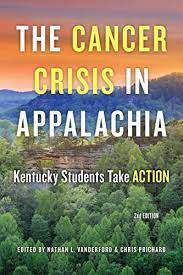
This workshop will improve Kentucky middle/high school students’ cancer literacy, as well as improve K-12 teachers’ confidence with classroom cancer education. We teach a cancer education curriculum of 3 lessons, each of which features a PowerPoint presentation equipped with interactive activities. The first lesson covers cancer biology and incidence/mortality rates in Kentucky. The second lesson covers cancer risk factors, and the third lesson describes cancer treatments. These lessons are shown to improve Appalachian Kentucky middle and high school students’ cancer literacy. In this workshop, we will complete the first lesson and touch on highlights of the second and third lessons. Afterwards, we will discuss future goals and implementation techniques for the curriculum.
Increased cancer education can cause behavioral modifications that can decrease long-term cancer risk. One effective way students and teachers can help reduce Kentucky’s cancer disparity is by educating themselves and sharing this information with others. By disseminating the curriculum to Kentucky students and teachers at the KAS meeting, we hope to educate and empower them to teach others about cancer in Kentucky.
Presenters: Lauren Rose and Dr. Nathan Vanderford, University of Kentucky
These suggest a social cohesion effort around the relatively non-partisan public safety issue of democratic cybersecurity. The democratization of technology and the democratization of knowledge can address this as both become more available to more and more people in society. This ranges from the open source movement to ease of use of proprietary devices. It supports inclusion, opportunity and accountability. Members of the cohorts successfully completed the trainings as to implement within their spheres of influence.
Law enforcement and public safety under the democratic accountability implicit in Western constitutions are vital to the liberties and protections of citizens. Together they may assure better community protection and engagement under the rule of law. Each alone is insufficient.
We must 'democratize' cybersecurity through its distributed availability. Universities, colleges, secondary schools and primary schools are essential to this. We present means to achieve this and results from efforts to promote this integration through several coordinated, yet differently targeted programs.
Previous studies have applied machine learning methods to predict AD in bulk RNA datasets. However, since AD's hallmark pathological characteristics are deviations from regular cellular functions, interpreting ML models trained on single cell RNA sequencing (scRNA-seq) datasets could reveal a relationship between age-related features from genomics datasets and Alzheimer's disease outcome.
In this study, we tested whether Alzheimer's disease can be predicted on the single cell level by building a machine learning model trained on scRNA-seq datasets. Simultaneously, we built on previous laboratory work to test the effects of count binarization on model performance.
We present two models that can successfully predict Alzheimer's Disease for held-out samples from the same patient datasets they have been trained on, with an AUROC score of up to 0.9752. Even more interestingly, these models generalize across patients, and can classify samples as control or diseases from never-seen-before patient datasets.
Our subsequent analysis, which involved extracting and ranking principal component loadings, highlighted 100 top genes, such as LY6H, DYNLL1, ERBB4, and NEAT1 – all of which have previously been connected to AD.
Further analysis of extracted features could shed light on the relationship between gene expression and AD progression, which may aid in early AD diagnosis.
S=1/2κ ∫▒〖(-g)^(1/2) d^4 x (R-9π/G 〖λ(ν)〗^2 ) 〗,
where λ(ν) is the expansion rate, it is possible to show that the geometry of quantum potential of the de Broglie-Bohm trajectory theory adds up to a classical expansion of the universe no matter the curvature, where the Friedman equation, for p=-2, reads
a ̇^2/a^2 =8πG/3 ρ_ν+λ(3/4)^2-k/a^2 ,
where the effective cosmological constant would take a place by reason of the general term (4ν (λ(ν)^2 g_μν )). The results show that quantum potential is equivalent to an effective cosmological constant which, then, plays the role of inflation when the scalar factor is much smaller than unity (a≪1).
Our experimental strategy entails subjecting hydroponically nurtured watercress to different levels of sulfur nutrient, within parameters compatible with its growth requisites. We will meticulously monitor the expression patterns of key enzymes and genes implicated in beta-carotene biosynthesis and scrutinize the progressive accumulation of this indispensable compound. Our anticipated findings are poised to elucidate the optimal sulfur level for augmenting beta carotene synthesis in watercress, ultimately amplifying its nutritional value and therapeutic utility.
The implications of this research endeavor are profound, with the potential to substantially influence public health by presenting an innovative and sustainable strategy for combatting age-related ocular maladies. By elucidating the nexus between the sulfur levels and beta-carotene accrual, we aspire to contribute to the formulation of dietary approaches and hydroponic cultivation methodologies that empower individuals to proactively oversee their ocular well-being and ameliorate the burden of age-related vision infirmities.
with metal oxide sorbents, DFT (B3LYP and ωB97X-D) and CCSD(T) methods are being used to
predict the Lewis acid-base addition (physisorption) and formation of metal oxide
carbonate/thiocarbonate formation (chemisorption) reactions of CS2, OCS, and CO2 of CS2, OCS,
and CO2 with Group IV (MO2)n and Group VI (MO3)n (n = 1 - 3) nanoclusters. For the Group IV
oxides, chemisorption to form terminal carbonates and thiocarbonates is predicted to be the most
favored, with thiocarbonate ligand binding energies slightly more exothermic than their carbonate
analogues, consistent with the small differences in the CS2C=S (105 kcal/mol) and CO2C=O (127
kcal/mol) bond energies. For Group VI, only weak physisorption (< 10 kcal/mol exothermic) is
predicted to occur for CO2, CS2, and OCS. These results are consistent with our previous studies
of CO2, NO2, SO2, and H2O adsorption to Group IV and Group VI metal oxide clusters. The results
of this work could have implications for the sequestration of CS2 from high-sulfur areas of arctic
permafrost and also provides mechanistic insights into the possible reactions and products of OCS and CS2-induced TiO2 degradation during the Claus Process.
[1] J. T. Lyon 'Building Blocks: Investigating the Structures, Properties, and Reactivity of Strongly Bound Atomic Clusters at a PUI' in Physical Chemistry Research at Undergraduate Institutions, vol. 2, Hopkins, T. and Parish, C. A., Eds. ACS Books (2022) 165-179.
concentrations have been implicated in altering environmental conditions and biodiversity. Zebra
mussels (Dreissena polymorpha) are an exotic and invasive mollusk that are known for their
'biofouling' capabilities costing billions of dollars in their removal from industrial, public, and
power plant water supply lines. Calcium is one of the essential elements that contributes to the
growth and reproduction of zebra mussels. Calcium concentrations of 25-28 mg/L are considered
the threshold for survival and reproduction of zebra mussels. The purpose of this study was to
determine if dissolved calcium levels in the lower parts of Kentucky Lake had increased and
reached zebra mussels survival and reproduction threshold. Surface and bottom water samples
were collected during Kentucky Lake Monitoring Program (KLMP) cruises as well as from two
tributary streams. Samples were filtered using 0.45 µm filters, acidified and analyzed for calcium
using an Atomic Absorption Spectrometer. Calcium levels and long-term monitoring data on
chloride levels in Kentucky Lake were examined for temporal trends. Results revealed that
relatively higher concentration of dissolved calcium was found in Kentucky Lake channel sites
than from embayment and streams. In general calcium levels show seasonal variation with
increasing concentration during winter and early spring months. Increasing levels of these
calcium ions may play a role in the elevated occurrences of zebra mussels in Kentucky Lake.
AG = ([Na+] + [K+]) – ([Cl-] + [HCO3-])
Anion Gap is currently calculated by using results of tests that measure cations and anions separately, causing the results to be prone to error. This research presents a method that directly measures the total cations and anions in a sample simultaneously using Pulsed Chronopotentiometry.
The objectives of this project involve building upon the foundation of existing smart hard hats by incorporating key features, including GPS tracking, an SOS/distress signal button, and a force monitor. These features will be augmented by the integration of a comprehensive database system designed to store information related to workplace incidents. Real-time alerts will be implemented to notify supervisors and managers promptly when incidents occur. Additionally, a camera system will be embedded within the helmet to capture crucial footage when the force monitor or distress signal is activated.
The anticipated outcomes of this project are multifaceted. By leveraging both existing and novel technologies, our aim is to create a superior product that enhances safety and accessibility for the wearer. Simultaneously, we intend to empower companies with a valuable tool for incident management and prevention. This innovative smart hard hat will not only protect workers but also serve as a powerful asset in optimizing workplace safety protocols and incident response strategies.
structural parts difficult. There currently is not a universally accepted method to predict how strong an engineering part is before 3D printing it.
The combination of Fast Fourier Transform (FFT), Root Mean Square (RMS) analysis, and Time Domain analysis offers a wide-reaching approach for unraveling the intricate time and frequency-domain characteristics of EMG signals. FFT analysis facilitates visual inspection of the frequency distribution within specific intervals, shedding light on dominant frequency bands associated with muscle contractions. RMS values add depth by quantifying the overall muscle activity and the distribution of such activity among specific muscles. Calculating total power, median frequency, and mean frequency enables identification of dynamic changes in muscle activation and adaptation.
The presented EMG-based techniques allow the evaluation of respiratory muscular function in individuals with SCI to uncover distinct spectral patterns. This multidimensional approach, aimed at predicting optimized neuromodulatory configurations for respiratory muscle activity, holds promise in enhancing our understanding of neuromuscular dynamics and contributes to the development of tailored rehabilitation strategies for patients with SCI and other neurological disorders.
Electron flux losses of an order of magnitude were observed at all evaluated L-shell in the 4 MeV population. These rapid flux losses corresponded with strong compression of the magnetopause, which was abruptly compressed from its nominal location by ~2R_E. Analysis of the phase space density (PSD) calculated from GPS fluxes showed a total loss of the 3433 MeV/G and 0.11〖 G〗^(1/2) R_E population at L^*> 4.5. Further examination of the PSD revealed radial diffusion transported particles across the magnetopause after initial compression, thus contributing to the dropout. This analysis demonstrates the feasibility of using GPS data to evaluate rapid changes in the radiation belts, especially in the post-RBSP era.
The HGA Revitalization Project has three strategic priorities: create a community engagement event called Music on the Green; place all campus buildings on the National Register of Historic Places; and use the administration building for educational outreach by holding college courses on HGA's campus.
These strategic priorities will serve the community socially, academically, and holistically as HGA once did. Service-learning projects have been conducted to achieve the three strategic priorities. Students from the Craft Academy at Morehead State University have taken service-learning trips to HGA to maintain campus upkeep. This special project offers students the opportunity to engage in STEM education as well as serve the community. It is the hope of the HGA Revitalization Project to share this innovative project with other STEM-focused students throughout the state of Kentucky and beyond.
The study employed a qualitative methods approach to explore students' perceptions, attitudes, and behaviors. Qualitative data were collected from field observation and one-on-one interviews. Five emergent positive outcomes were found throughout the design, construction, and operation of the students' systems: 1) students were able to contribute their own experience and perspectives to the project; 2) students developed critical thinking skills; 3) students gained a sense of pride and self-satisfaction; 4) students showed focus and determination to engage in the project; and 5) students were motivated to engage in the project from start to finish.
Results demonstrated that the program engaged learners in real-world problem solving and decision-making situations while working collaboratively. Overall, this project shows how hands-on, project-based STEM learning activities in aquaculture/aquaponics can build students' confidence in STEM and produce positive learning outcomes. The author's next steps will be to introduce these methods to a larger number of students, in a classroom setting for example, to make the results more generalizable.
| Associate Director, NASA-Ky: Jacob Owen | Director, NASA-Ky: Alexandre Martin |
 NASA Kentucky (Kentucky Space Grant Consortium and NASA EPSCoR Programs) presents current and ongoing research from NASA-related projects conducted at institutions across the state. NASA KY supports research in aerospace, aeronautics, space science and related disciplines such as energy, physics, geosciences, biomedical, human health and performance, and computer science.
NASA Kentucky (Kentucky Space Grant Consortium and NASA EPSCoR Programs) presents current and ongoing research from NASA-related projects conducted at institutions across the state. NASA KY supports research in aerospace, aeronautics, space science and related disciplines such as energy, physics, geosciences, biomedical, human health and performance, and computer science.The National Space Grant College & Fellowship Program was initiated by Congress in 1987 in response to the need to help maintain America's pre-eminence in aerospace science and technology. Kentucky Space Grant Consortium (KYSGC) is a diverse group of 29 affiliate members, including 18 Kentucky universities, colleges and community colleges, 5 industry partners, 4 science centers and 2 STEM educational organizations, partnered with NASA to support Kentucky college students, faculty and pre-college outreach. The national Space Grant network includes over 1,000 affiliates from universities, colleges, industry, museums, science centers, state and local agencies.
The NASA Established Program to Stimulate Competitive Research (EPSCoR) supports partnerships with government, higher education and industry designed to effect lasting improvements in a state's research infrastructure and R&D competitiveness. Kentucky's NASA EPSCoR Program supports NASA-related research projects and partnerships in the state for any Kentucky institution of higher learning and their industry partners.
In this study, the effective thermal and mechanical properties of a carbon fibrous material is predicted based on the micro-structure using a nonlocal Lattice Particle Method (LPM). The micro-structure is represented as voxel-based binary files obtained by scanning the fibrous sample. LPM is a nonlocal discrete method that treats a material domain as an assemblage of regularly packed material particles. This feature makes LPM a desirable tool for computational homogenization based on microstructures by directly taking voxel information as input file. We focused on thermal conductivity and mechanical properties in this study. We conducted a convergence study of calculated material properties with respect to different ratio of particle resolution and voxel resolution. Then the effective thermal conductivity tensor and effective mechanical properties are predicted for several set of microstructures.
NKU P
 resident Dr. Cady Short-Thompson welcomes us to Northern Kentucky University
resident Dr. Cady Short-Thompson welcomes us to Northern Kentucky University2023 Keynote Speakers
Rebec
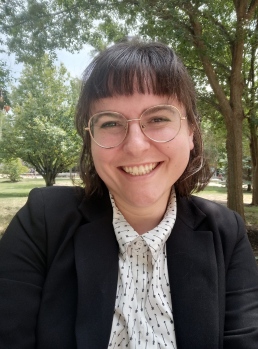 ca Blankenship
ca BlankenshipPerhaps best known as Kentucky's first openly transgender elected official, Rebecca Blankenship is an issues-first political operative working to make Kentucky a freer, more rational place. She has worked on political campaigns from U.S. Senate down to city council. At the Kentucky State Capitol in Frankfort, she advocates on bills concerning students' rights, First Amendment protections, LGBT rights, and nuclear energy. She lives in Madison County, Kentucky.
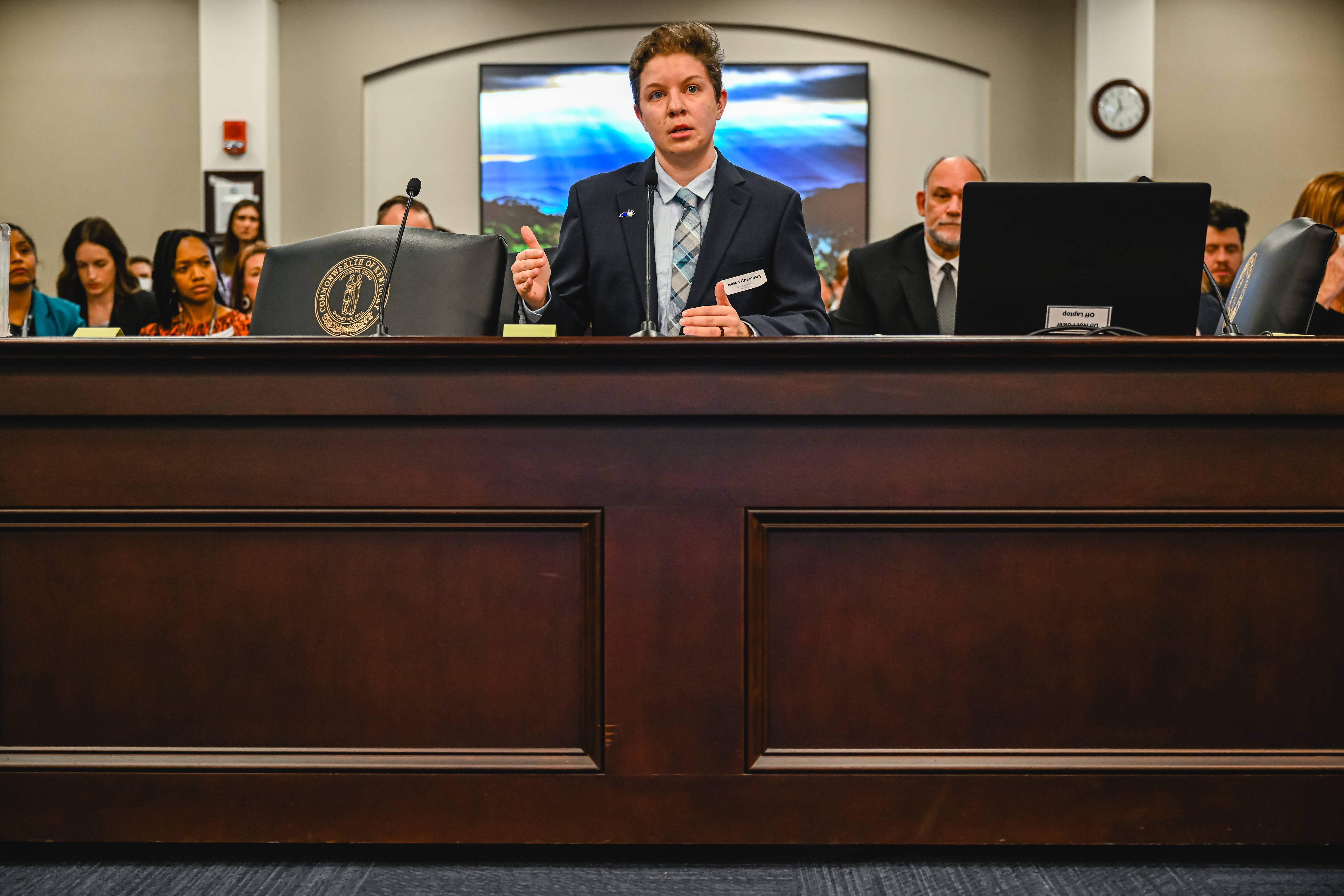
Mason Kalinsky
Mason Kalinsky is the Organizing Director for Hood to the Holler. He is dedicated to community organizing and building progressive people power in Kentucky. He also has worked in Frankfort to protect trans rights and is familiar with the movement to protect trans kids across the United States. In 2018, he published a study on a peer-to-peer gatekeeper intervention to reduce rates of suicide among LGBTQ adolescents.
To walk to the NKU Fine Arts Center, exit the Student Union to the East (the opposite direction from the parking garage). Walk past (or through) the University Center building and turn left to reach the Fine Arts Center.
NKU Campus Map

Haile Planetarium is one of the hidden gems of Northern Kentucky University and is open the public on Friday evenings. Haile Planetarium is open to the public several times a month for free shows. The largest use of the Haile Planetarium is for the thousands of P-12 students who visit each year for a free field trip. As part of the Physics, Geology, and Engineering Technology Department, Haile Planetarium is located on the fourth floor of the Science Center.
We have reserved the Newport Aquarium for an exclusive KAS event. Join us for 
The Newport Aquarium event is included in your meeting registration if you RSVP'd.
Demand seems to be outstripping the supply of "geoscience" graduates, and Kentucky is going to need more professionals than we have now. What are the challenges in higher education?
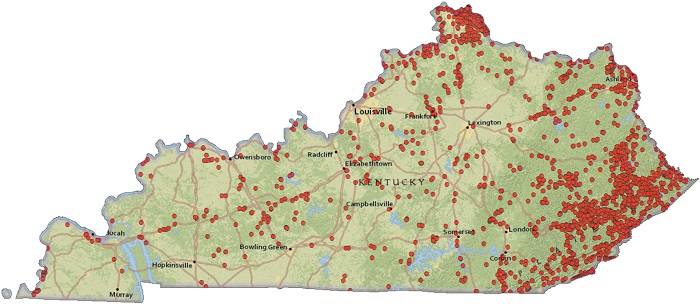 What investments & strategies do we need across the sector? Join a conversation with Dr. William Andrews, the new Director of the Ky Geological Survey. How do you think Kentucky can recruit more professionals into geoscience career paths, market modern geosciences to a diverse population of students, and communicate a more accurate & modern representation of diverse geoscientists & careers to the general public? Bring your experiences & ideas and join the conversation!
What investments & strategies do we need across the sector? Join a conversation with Dr. William Andrews, the new Director of the Ky Geological Survey. How do you think Kentucky can recruit more professionals into geoscience career paths, market modern geosciences to a diverse population of students, and communicate a more accurate & modern representation of diverse geoscientists & careers to the general public? Bring your experiences & ideas and join the conversation!| Organizer: Julie Reizner |
Because bone is laid down as an animal grows, vascular canals change orientation and density over time, and annual growth rings are often deposited. Since we can compare these patterns to those of living animals, we can determine metabolism and growth rates of the extinct animals, as well as how old the individuals were when they died. Special life events such as hatching and pregnancy have even been identified.
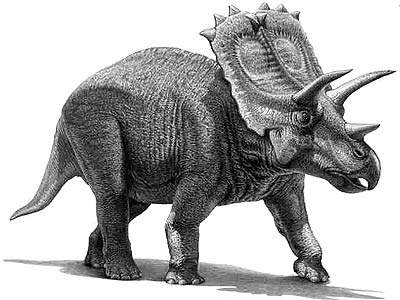
All paleontology is multidisciplinary - combining the sciences of biology and geology - but the study of paleohistology also involves medical professionals who can identify episodes of disease and injury in bone, biomechanical engineers who work on posture and locomotion, and ecologists who study population dynamics and survivorship trends. Therefore this session holds interest for many students, educators, and researchers.
This session will feature current work on a monospecific population of ceratopsian dinosaurs from Montana. Through paleohistological methods, these researchers are establishing metabolic rates, growth dynamics, survivorship, and even herding and other social behaviors of this species. Meeting attendees will be exposed to a fascinating field they may not have even known existed.
This introduction to paleohistology will detail research on the ceratopsian dinosaur Einiosaurus procurvicornis (Sampson). This species is known exclusively from the Upper Cretaceous Two Medicine Formation of northwestern Montana, from a bonebed representing a herd of animals that lived and died together. Paleohistological methods are used to test hypotheses on growth dynamics and population biology, including reproductive and social behavior, of this little-known dinosaur.
As expected from any death assemblage past or present, the E. procurvicornis specimens were babies, juveniles, and subadults when they succumbed to drought. Bone tissue indicates that the largest individuals in the sample were not yet skeletally mature adults. Thus, the distinctive cranial ornamentation that defines this species is based on subadult individuals, and the full adult morphology is not currently known. This phenomenon is not unusual in dinosaurs but has major implications for taxonomic resolution and morphometric studies of ceratopsians. Current paleohistological work presented in this special session further adds to the understanding of the horned dinosaurs.
Here, we detail the bone microstructure of the centrosaurine ceratopsian dinosaur Einiosaurus procurvicornis (Sampson) from Montana. Thin sections are taken from two tibiae and the microstructure examined. While previous studies have simply identified the presence of Haversian bone, this current work identifies regions of longitudinal, reticular, radial, and other patterns of vascular canals that can give greater detail into the growth of an individual E. procurvicornis from baby to maturity. Vascularity and osteocyte density is quantified using a point-count method. The considerable osteocyte density seen in E. procurvicornis reflects a sustained rate of fast growth, and radially-oriented canals further indicate rapid growth, much faster than modern reptiles (as in all dinosaurs) but a little slower than other, more southerly ceratopsians. These details of E. procurvicornis can inform future studies on how metabolism and growth is influenced by climate and latitude of the ancient realms of the horned dinosaurs.
Speleological mapping revealed an undocumented cave system, established its relationship to surface topography, and quantified thickness of rock/soil overburden above the cave. Geological mapping documented faulting and joint-control that influenced cave extent/footprint, and bedrock characteristics impacting groundwater flow. Field observations identified underground zones where surface sediments and debris (natural and man-made) accumulated causing impact to groundwater flow. Direction of groundwater flow in the cave system and proximity of significant springs outside of LRGB suggested the area of interest was not part of LRGB but of an undocumented groundwater basin. Landform analysis using GIS/LIDAR revealed pre-existing sinkholes making the area prone to future collapses and flooding.
Evaluation of assessment data with the risk-hazard rubric showed the undeveloped area to be at high risk for karst land-use hazards and informed recommendations for additional assessments and more detailed risk-analysis.
IC 3599 was discovered as an extremely bright X-ray source during the ROSAT All-Sky Survey in 1991, but later
pointed observations revealed a dramatic drop in the X-ray flux. One model to explain such a dramatic X-ray outburst
is the tidal disruption of a star by the central black hole. However, another flare was detected in 2010 by Swift.
This makes the Tidal Disruption Event (TDE) scenario less likely and favors an accretion disk instability. Nevertheless,
one possibility is the partial tidal stripping of a star on an elliptical orbit around the star which would suggest a
periodic flaring. In this model it was predicted that another flare would occur in 2019/2020. Our Swift monitoring clearly
shows that this is not the case and that the flares can be explained by accretion disk instabilities. I will present
how that X-ray and UV emission in IC 3599 has changed over the last decade and what this means for modelling this AGN.
galaxy WPVS 007 in X-rays in Summer 2023. WPVS 007 is a very unusual Active Galactic Nucleus (AGN). While it is a
low-luminosity, small black hole mass AGN, it exhibits variable, strong broad absorption lines in the UV that
are only seen otherwise in highly luminous, high black hole mass quasars, the Broad Absorption Line quasars (BAL QSOs).
What makes things even more puzzling is that the disappearance of BALs has been reported in about 3% of all BAL QSOs,
the strength of those BALs is weak. However, in WPVS 007 these BALs appear to be strong. WPVS 007 was discovered
more than 30 years ago in the ROSAT All-Sky X-ray Survey, but then dropped by a factor 400 and basically vanished from
the X-ray sky. It re-appeared again in Swift observations in 2010 and 2011, but then was gone again for about a decade.
Recently in June 2023, however, it re-emerged again.
A total of 1291 test particles survived for the entire integration time. Of these survivors, 99% were associated with the nominal orbit with i0 = 0◦ in the L4 swarm. These surviving test particles had initial eccentricities in the range e0 < 0.07. The half-lives associated with L4orbits were 1258 Myr, 286 Myr, 56 Myr, and 237 Myr for nominal orbits with i0 = 0◦, 5◦, 15◦, and 30◦, respectively. The half-lives associated with L5 orbits were 103 Myr, 281 Myr, 25 Myr, and 46 Myr, respectively. The overall results showed that the ecliptic plane is one good place to search for primordial Uranus Trojans.
Our results revealed that there was no significant change in the concentration of fatty acids in the presence or absence of the supplement. Furthermore, we did not detect a significant difference in the level of liver damage after treatment with the supplement. We plan to continue this study by using RNA sequencing to identify critical gene expression patterns in alcohol-associated liver disease.
After summarizing several ways to simulate radioactive decay in a classroom environment, we describe the use of multiple controlled trials modeling decays with short, medium, and long half-lives with both centicubes and dice. We completed a statistical goodness-of-fit test to compare their various exponential curves and empirically demonstrate the extent of their similarity. Implications for classroom instruction will be discussed.
This pilot study used a mixed methods approach to learn more about STEM persistence and attrition from the perspective of mid-career Puerto Rican women who completed their Ph.D. in STEM at the University of Puerto Rico. While a survey identified demographic and career backgrounds of these professionals, a semi-structured interview allowed the participants to reflect on the role of gender, ethnicity, skin color, and sexual orientation, if any, in their trajectory after their doctorate. They also shared the people and events that made a positive difference in their lives and advice for young Latinas interested in STEM.
The purpose of this study is to describe the psychometric design, development, and validation of the Survey of Meteorology Concepts (SMC) as a pre- and post-survey to identify to what extent weather misconceptions exist among post-secondary civilian students and cadets. Concepts like reliability, item difficulty, item discrimination, confidence indexes, and differential item functioning will be described in the context of the SMC.
To promote weather literacy, one crucial step is to assess the meteorology knowledge of college students completing general education earth science courses. However, measuring how much correct information and misconceptions they hold is difficult without a validated survey. From this, there comes a need for a standardized survey that can produce valid and reliable information.
The purpose of this study is to identify to what extent weather misconceptions previously held by college students persist after completing ESS 102. This will be achieved by examining the psychometric statistics from the pre- and post-survey data that will also be used to validate the study.
The purpose of this study is to identify to what extent weather misconceptions persist after a group of 19 college students complete ESS 112, a course for future K-5 science educators, as measured by their performance on a recently created Survey of Meteorology Concepts. By examining participant data using psychometric statistics, the pre- and post-survey data will also be used to validate this survey.
After analyzing a survey administered to cadets in October 2022, the researcher found that the three most impactful factors related to STEM attrition included the instructors' accelerated pacing of instruction, the limitations of time and effort due to multiple workloads (academic, military, and physical readiness), and the classroom experience in Calculus I & II. Push factors disparities between lower-income vs. higher-income families, cadets who attended vs. did not attend Preparatory schools, and cadets from minority backgrounds vs. Caucasian cadets were identified. Cadet feedback to prevent STEM attrition will be discussed.
This poster utilizes autoethnographic research following my life as a lower income dancer from Appalachia and will review literature regarding in/accessibility of dance in order to call into question the ways in which the discipline excludes and sidelines minoritized dancers, especially poor and working class dancers and dancers of color. Anthropological research into cultures of exclusion and barriers is the first step into understanding and breaking these troubled traditions in order to make way for healthier generations in the long run.
a multisystem phenotype referred to as NDH1 that is characterized by neonatal diabetes mellitus,
congenital hypothyroidism, and polycystic kidney disease (PKD). Numerous genome-wide
association studies (GWAS) have additionally identified GLIS3 as a risk locus for the
development of type 2 diabetes mellitus. Despite its clinical significance, little is known about
the role(s) Glis3 plays during development.
In this study, we have characterized developmental expression of glis3 in the zebrafish
(Danio rerio). Whole-mount in situ hybridization experiments revealed that glis3 was detectable
within the pronephros by 24 hpf and pancreas specific expression was evident by 72 hpf. A
mutant line of zebrafish that lacks functional glis3 expression was generated using CRISPR/Cas9
technology and presented with a syndrome including thyroid dysfunction, polycystic kidney
disease, reduced fertility, and premature mortality. Large glomerular cysts were detected in
mutant larvae as early as 6 dpf. Although the development of the principal pancreatic islet was
largely unaffected by loss of functional glis3, a significantly reduced proportion of homozygous
KO larvae had developed secondary islets by 8 dpf.
Our results suggest that glis3 plays a critical role in the proper patterning of the zebrafish
kidney and may play an important role in the formation of secondary pancreatic islets emerging
from Notch-responsive progenitors associated with the pancreatic ductal epithelium. A better
understanding of role(s) glis3 plays during development could provide key insights into the
pathogenesis of diabetes and chronic renal disease.
We have made a new compound [β-Cadmium (HIS)] (HIS = histidine) using the hydrothermal method by reacting Ca(NO3)2 with histidine. In the crystal structure of this compound, the cadmium ions and the histidine ligands form a three-dimensional framework. Our study has found it can mimic the capabilities of carbonic anhydrase at a significantly lower cost.
We found that sodium borohydride (NaBH4) and sodium bicarbonate (NaHCO3) significantly increased the catalytic activity of Pt/C, while sodium hydroxide (NaOH) had no effect on the catalysis. Further, formate (CHO2-) was the hydrogenation product observed from these reactions rather than methanol (CH3OH) as was reported previously. The above results will be presented and discussed in the context of published mechanistic studies on related materials such as palladium catalysts and reactions of CO2 with NaBH4.
Different nanoparticle sizes and shapes were obtained in ionic liquids by changing the reducing agent used and the concentration of surfactant in solution. These catalysts are intended for CO2 hydrogenation to form methanol, and thus we are currently determining our limits of detection for methanol in these ionic liquid mixtures. These preliminary studies will be followed by CO2 hydrogenation experiments to correlate nanoparticle size, shape, and synthesis history with catalytic performance. This presentation will include ionic liquid synthesis and nanoparticle shape control, as well as our current progress on methanol detection and CO2 hydrogenation with these catalysts.
Nature camps are a type of outdoor education program that provides children with an immersive outdoor experience. It is essential for children to have outdoor experiences in order to increase their environmental knowledge and reinforce positive attitudes toward nature. Previous research suggests that nature camps may help to promote knowledge and positive attitudes toward nature, ensuring a lasting connection and continued environmentally conscious behaviors. This study examined the effectiveness of nature camps to positively impact children's attitudes and knowledge toward nature. Children ages 5-13 (n = 182) attending a nature camp at Bernheim Arboretum and Research Forest in Kentucky completed pre- and post-camp questionnaires. Questionnaires examined the camp's effectiveness in increasing children's knowledge and attitudes toward nature by comparing children's desire to be outside, care for nature, and knowledge of nature pre- and post-camp. Results demonstrate a significant increase in knowledge of habitats (p = 0.0253) and pollinators (p = 0.0032), and an increased preference for playing outside over playing video games (p = 0.0450). These results indicate that nature camps are successful at positively affecting children's attitudes and knowledge toward nature.
Caco-2 cells were grown on Transwells that were treated with cytokines TNF-α and IFN-γ (10 ng/mL each) to mimic IBD conditions. Hsp60 inhibitors mizoribine and SD169 were added with and without the cytokines. A fluorescein isothiocyanate dextran 4kDa (FD4) permeability assay was used to test the effect of Hsp60 inhibitors on intestinal permeability and consequent cell–cell junction disruption. Relative to the TNF-α and IFN-γ treatment, SD169 but not mizoribine reduced FD4 permeability by two-fold. These findings suggest that Hsp60 inhibitor SD169 may alleviate IBD. Further experiments will test the cytotoxicity of SD169. We also foresee designing a bioengineered chaperonin-inhibiting probiotic.
Ashley Denney and Lindsey Walters
Department of Biological Sciences, Northern Kentucky University, Highland Heights, KY 41099
Most studies of parental care behavior in passerine birds focus on parental provisioning of nestlings with food. The removal of fecal sacs, a mucus covered waste product of nestlings, is a subject that is relatively under-investigated. However, waste removal is an energetically costly behavior for parents that merits further study to fully understand avian breeding biology. For tree swallows (Tachycineta bicolor), both parents take turns removing fecal sacs, disposing them far from the nest to keep predators away and increase the sanitation of the nest. We wanted to determine if male and female tree swallows differed in their rates of fecal sac removal. We predicted that males would remove more fecal sacs than females because females spend time brooding the nestlings and are unable to leave for long periods. To test this, we recorded the number of times each parent removed a fecal sac during one hour, conducting 220 observations of 48 different nests. Contrary to our prediction, we found that there was no significant difference between the overall removal rate for males and females. However, there was a significant interaction between sex and nestling age on fecal sac removal rate, with males removing more fecal sacs when nestlings were young (1-7 days) and females removing more after day 8. These results provide new insight into the behavior of tree swallows. By the parents switching roles as nestlings age, they are contributing approximately equally to their nestlings' fitness. How they negotiate the switch is unknown and deserves further study.
Water samples were taken on four days throughout the summer of 2023. We measured nutrient concentration (nitrogen as nitrate and ammonium, and phosphorus as phosphate) using established colorimetric methods, and generated fecal microbe counts (Escherichia coli) using IDEXX materials and procedures.
The highest nitrate and phosphate concentrations were found within the discharge of the sewage treatment plant and decreased progressively at downstream stations. Highest ammonium concentrations and highest E. coli counts were found at sites with active cattle pasture and at rural residential areas served by septic systems.
These data verify that both point- and non-point-source contamination occurs in the Otter Creek watershed. Compared to national data, nutrient concentrations only occasionally spike higher than median national values, mostly due to contributions from the sewage treatment plant. Fecal microbe counts commonly exceed EPA standards throughout the watershed. Sampling during five field seasons (2013-2015; 2022 and 2023) consistently shows the same sources and levels of nutrient and fecal microbe contamination. Addressing these identified contamination sources can lead to improved water quality of the Otter Creek watershed.
By RSVP. The field trip will leave from NKU at 1:30 pm and return around 4:30. Parking is very limited at both field stations so van transportation is provided
The Thomas More University Ohio River Biology Field Station is a 25-acre teaching and research 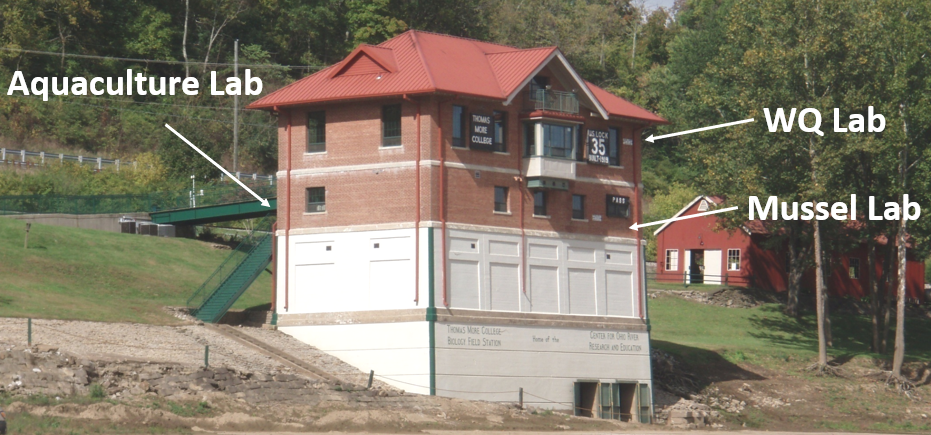
The NKU Research & Education Field Station (REFS) is also situated on the Ohio River, and has offered
Teachers seeking PD hours will receive a certificate of completion.
We qualitatively characterized diverse bioactive compounds within LDE, including phenols, flavonoids, saponins, terpenoids, and steroids. Additionally, we quantified the total phenolic and flavonoid content, yielding values of 54.18 ± 4.36 µg GAE/mg and 0.626 ± 0.09 µg QE/mg extract, respectively. LDE exhibited strong reducing potential and efficiently scavenged DPPH, superoxide, and hydroxyl radicals in a concentration-dependent manner, with IC50 values ranging from 20 µg/mL to 310 µg/mL.
Furthermore, we evaluated the extract for its inhibitory effects on key diabetes-related enzymes, revealing significant inhibition of PTP1B and α-amylase with IC50 values of 23.94 µg/mL and 109.3 µg/mL, respectively. However, LDE showed a modest effect on glucosidase. These findings highlight Lomatium dissectum's potential as a natural anti-diabetic and hypoglycemic agent and its role in experimental research and affordable drug development, promising opportunities for diabetes care and addressing oxidative stress-related complications.
| Chair, Analytical & Physical Chemistry: Emmalou Schmittzehe-Skarbek | Secretary, Organic & Inorganic Chemistry: Elizabeth Thomas |
| Chair, Organic & Inorganic Chemistry: Laura Rowe |
We hypothesized that PSPH could potentially be used as an important biomarker in understanding breast cancer cell proliferation and tumor progression.
Histologic sections of archived formalin fixed paraffin embedded (FFPE) surgical specimens of breast tissues donated by St. Elizabeth Healthcare were stained immunohistochemically for expression of PSPH. The area of breast epithelial tissue stained immunohistochemically for PSPH, and the intensity of the stain was multiplied to give a 'Histoscore' for each tissue. Samples were analyzed statistically using a repeated measure analysis of variance with a Tukey adjustment for multiple comparisons.
PSPH expression did not differ significantly between normal breast and benign breast disease (p = 0.0752) but did differ significantly between normal breast and preinvasive breast cancers (p < 0.0001), invasive breast cancers (p < 0.0001), and metastatic breast cancers (p = 0.0049). Importantly, PSPH expression in benign breast disease differed significantly from preinvasive breast cancers (p = 0.0057).
Conclusion: These data are consistent with the conclusion that PSPH overexpression is associated with malignant transformation in human breast tissues.
Participants included 1279 young adults attending a large midwestern university who completed an online survey assessing network orientation, CSA and ASA exposure. Analyses included independent samples t-tests to compare network orientation scores between individuals who have experienced childhood SA and those who experienced adult SA. Results showed that exposure to any SA resulted in significantly higher negative network orientation scores than no exposure. Similarly, exposure to both child and adult SA indicated increased negative orientations compared to those who had been exposed to only one type of SA. In contrast, there were no significant differences in network orientation scores between exposure to CSA or ASA respectively. This suggests that exposure to SA, regardless of age, negatively impacts one's attitudes towards social support, and these effects can be exacerbated by exposure to both types of SA.
Participants (N = 801; 62% male, 84% White/Caucasian, and 58% heterosexual) were recruited via Amazon Mechanical Turk and compensated $.50 for their participation. Each participant, or rater, was asked to evaluate five similarly qualified applicants on their qualifications, hireability, and afterwards, to select their 'top choice. Using a multilevel modeling approach, we examined the interaction between the applicants' gender expression and pronoun presentation cues, and their impact on the raters' evaluations. We also examine the role of rater characteristics (i.e., gender identity, age, and gender role beliefs) in the evaluations of applicants' qualifications and top candidate selections. The results of the study are presented and implications for both research and practice are discussed.
Data from participants at a public midsize southern institution (N = 455 undergraduate and graduate students) were collected via a campus climate. The survey included 9-items that assessed campus belongingness. Using an exploratory factor analysis with Principle Axis Factor (PAF) extraction and Oblimin rotation (all loading coefficients > .45), we identified three sub-factors, each composed of 3-items, within the belongingness scale: social support, prejudice, and safety/respect. Overall, students were more likely to recommend the university when they scored higher on belongingness. Additionally, comparisons of group differences revealed that both minority gender identity and racial minority students reported higher rates of prejudice than their respective majority groups. The results of this study indicate the importance of using a psychometrically sound measure to understand how students experience their college campus. Additional results will be further explored and implications discussed.
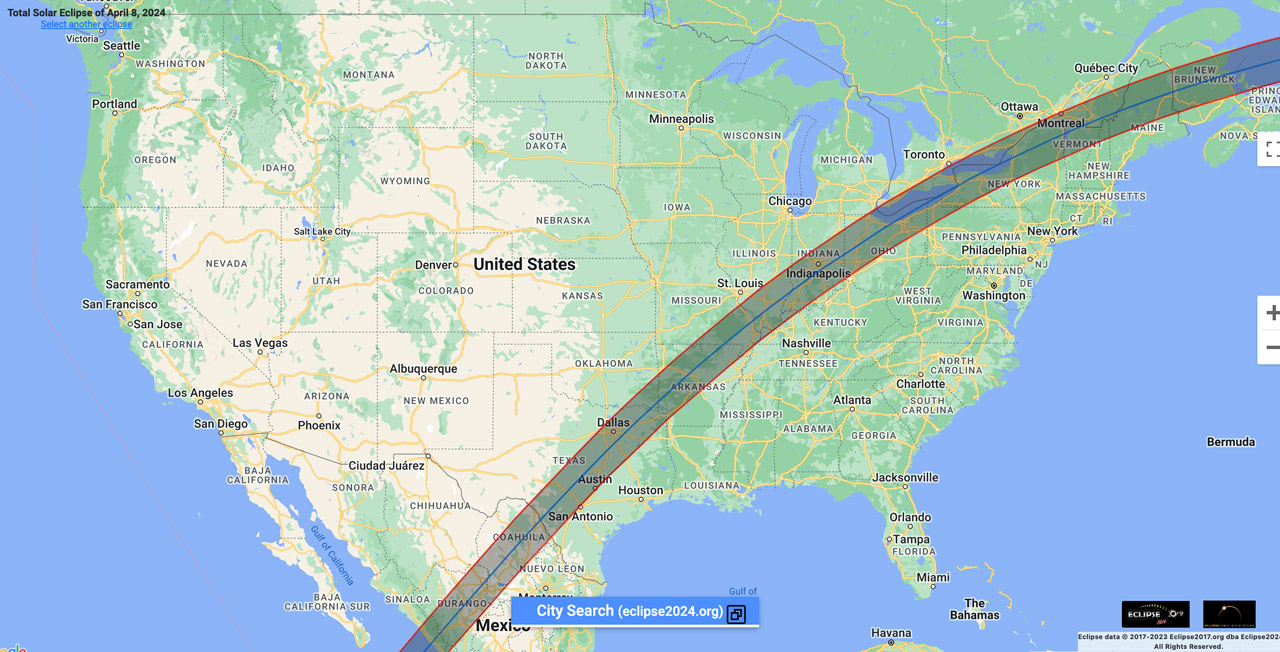
Don't be left in the dark when the solar eclipse happens on Monday 8 April 2024. Through Hands-on activities, participants will be provided with dozens of resources to maximize your students' experiences of the upcoming total solar eclipse. Topics will include several methods to safely enjoy viewing the Sun and partial phases of the eclipse; accurately scaled models of the Sun, Earth, and Moon; and detailed examples of a learner-centered experiment related to a solar eclipse.
On Monday 8 April 2024, the path of totality will be visible in a path starting in Mexico, crossing through Texas, Oklahoma, Arkansas, Missouri, Illinois, Indiana, Kentucky, Ohio, New York, Vermont, New Hampshire, & Maine, and across the eastern provinces of Canada. Everywhere else in North America will have a partial solar eclipse. It will be teachers who are the natural ambassadors for science engagement and trusted advice. The hands-on activities presented in this workshop are meant to prepare teachers.
Presenter: Dr. Richard Gelderman, Western Kentucky University
 process of learning topical content, students also gain skills such as teamwork, problem solving, information processing, and the ability to reflect on their own learning. In a POGIL classroom, the teacher facilitates student learning by listening to the teams' conversations, guiding teams when necessary, and bringing the class together to discuss what they have learned. A POGIL classroom buzzes with conversation, questions, and the excitement of figuring out difficult material with peers. Research shows that students learn more and retain more information with the POGIL approach than they do with lecture alone. ,
process of learning topical content, students also gain skills such as teamwork, problem solving, information processing, and the ability to reflect on their own learning. In a POGIL classroom, the teacher facilitates student learning by listening to the teams' conversations, guiding teams when necessary, and bringing the class together to discuss what they have learned. A POGIL classroom buzzes with conversation, questions, and the excitement of figuring out difficult material with peers. Research shows that students learn more and retain more information with the POGIL approach than they do with lecture alone. ,This workshop will provide participants with a student-eye-view of a POGIL classroom, followed by guidance on how to facilitate a POGIL classroom, as well as data on the effectiveness of the approach. Postsecondary and K-12 instructors will acquire tools and materials to use in their classrooms, whether or not they choose to adopt the POGIL approach.
Presenter: Dr. Megan Morgan Hoffman, Berea College
A U.S. National Natural Landmark, Big Bone Lick State Historic Site records details about the lives, and deaths, of Ice Age mammals that roamed our region aroun
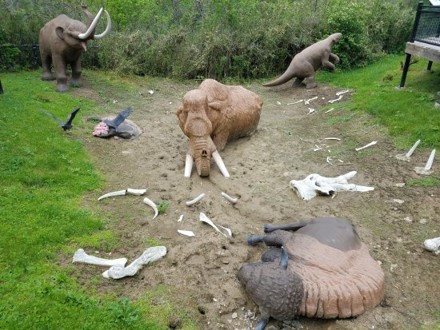
Teachers seeking PD hours will receive a certificate of completion.
Registration & Abstracts
2025 Keynote Speaker
2025 Sponsors & Exhibitors
Social Media Photo Contest
Publish Your Research
Under 18 Waiver
See you in 2026 at Murray State University!!

2025
